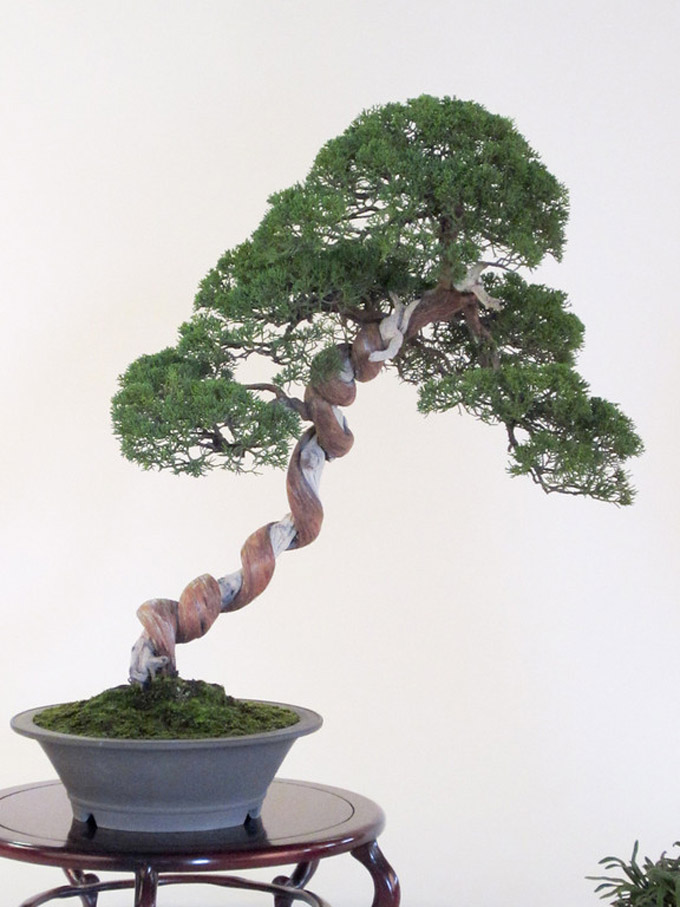 Doing the twist. We’ve featured a few of these corkscrew types lately (all Shimpaku junipers), but this one takes the cake. Even though there’s something unnatural about many of these twisted bonsai, some work better than others and I’d put this one in that category. BTW: nature sometimes does twist trees in this manner, but I’m not so sure you’d find ones with this many twists growing naturally. Photo by Jonas Dupuich of Bonsai Tonight.
Doing the twist. We’ve featured a few of these corkscrew types lately (all Shimpaku junipers), but this one takes the cake. Even though there’s something unnatural about many of these twisted bonsai, some work better than others and I’d put this one in that category. BTW: nature sometimes does twist trees in this manner, but I’m not so sure you’d find ones with this many twists growing naturally. Photo by Jonas Dupuich of Bonsai Tonight.
Pines and junipers at Meifu-ten
All of the photos in this post have been lifted from a post on Bonsai Tonight titled Pines and junipers at Meifu-ten. I picked out four of the most unusual trees because bonsai that are both high quality and unusual seem to exist at the cutting edge of the art (I’m not sure if this statement is really true, it just stuck me at this moment; you can be the judge).
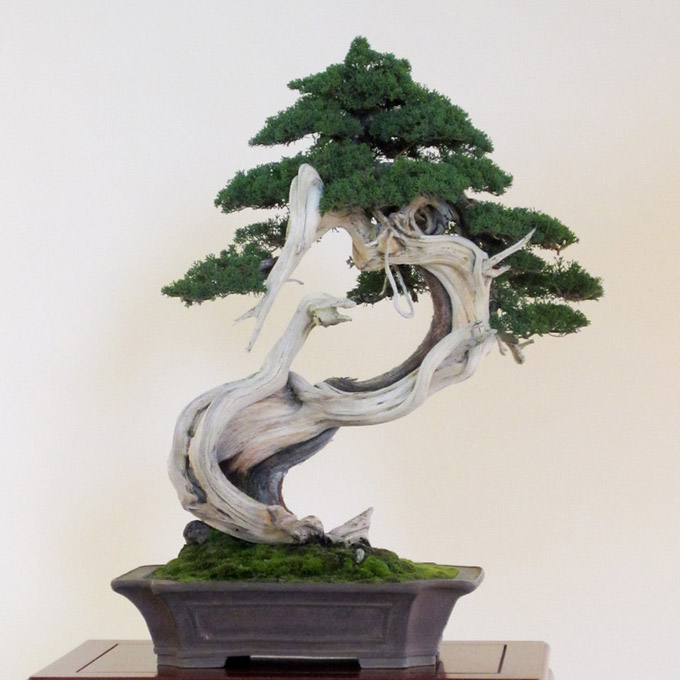 A question mark. There area couple things that mark this striking Shimpaku as unusual, even eccentric. The most notable of these is the trunk’s question mark shape; a shape that is sometimes criticized in Japanese bonsai. Then there’s the way the deadwood forms an almost closed semi-circular hole (an abundance of strangely shaped deadwood is very common these days, especially in Japanese bonsai, so perhaps this isn’t really worth mentioning).
A question mark. There area couple things that mark this striking Shimpaku as unusual, even eccentric. The most notable of these is the trunk’s question mark shape; a shape that is sometimes criticized in Japanese bonsai. Then there’s the way the deadwood forms an almost closed semi-circular hole (an abundance of strangely shaped deadwood is very common these days, especially in Japanese bonsai, so perhaps this isn’t really worth mentioning).
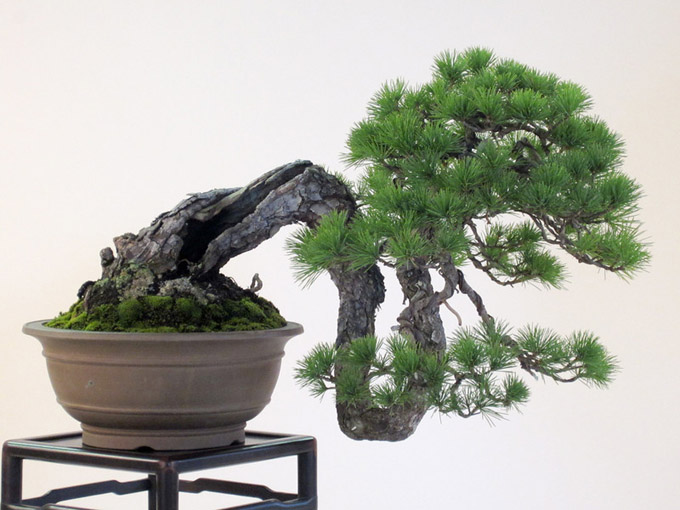 Time for a pine. This one’s eccentricity speaks for itself (hint: it’s not the powerful base with its excellent sabamiki or the aged bark).
Time for a pine. This one’s eccentricity speaks for itself (hint: it’s not the powerful base with its excellent sabamiki or the aged bark).
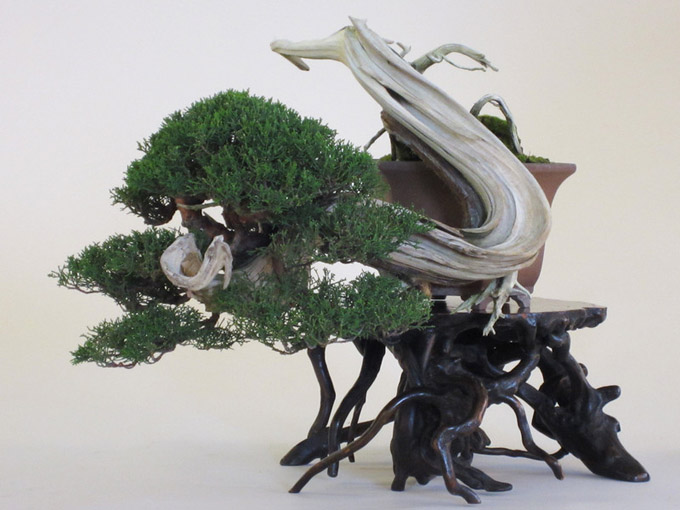 Another Shimpaku. It’s easy to picture this strangely swooping tree growing down a cliff somewhere in the mountains of Japan. I wonder if the busyness of the base distracts from the tree.
Another Shimpaku. It’s easy to picture this strangely swooping tree growing down a cliff somewhere in the mountains of Japan. I wonder if the busyness of the base distracts from the tree.
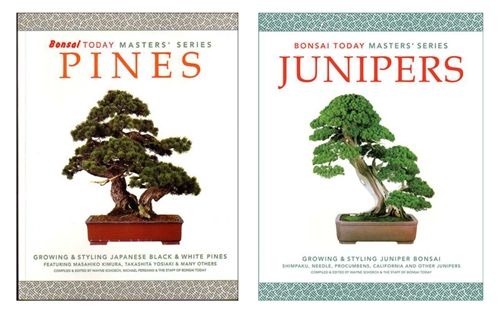 While we’re on the topic of Pines and Junipers: these Stone Lantern Masters’ Series books can be purchased individually (both are discounted) or as set (for a larger discount).
While we’re on the topic of Pines and Junipers: these Stone Lantern Masters’ Series books can be purchased individually (both are discounted) or as set (for a larger discount).
Yes the busyness of the base distracts from the awesome tree. Good Day Connie
Thanks Connie,
It’s always good to hear from people who agree with me.